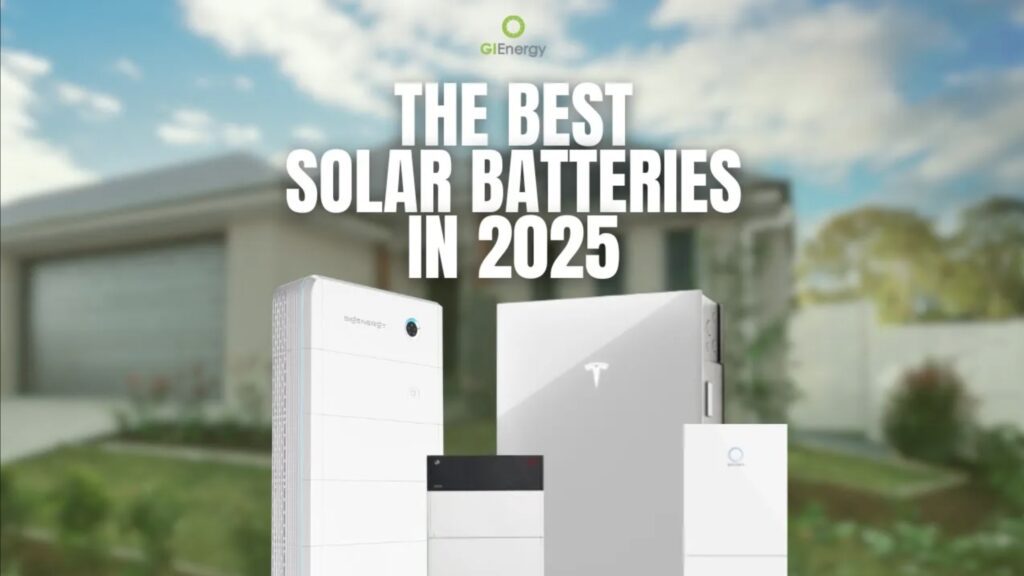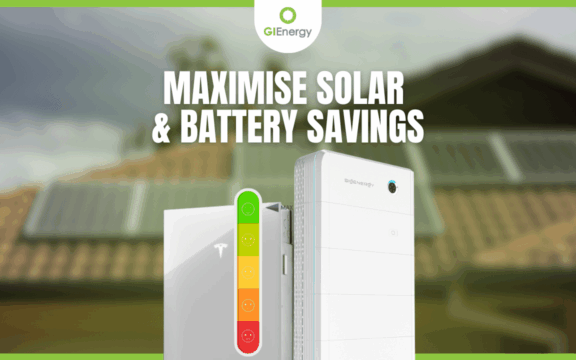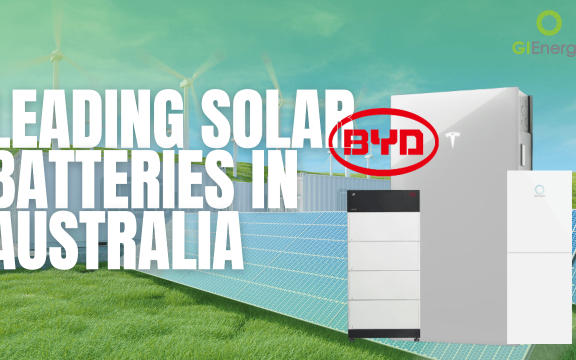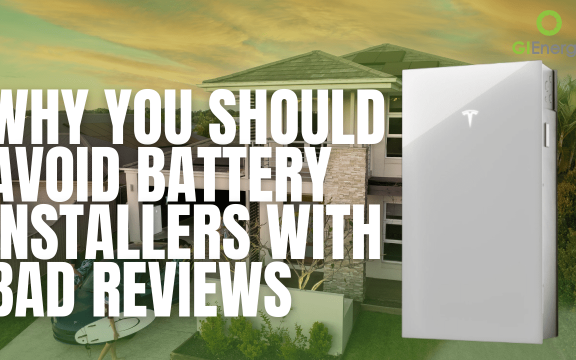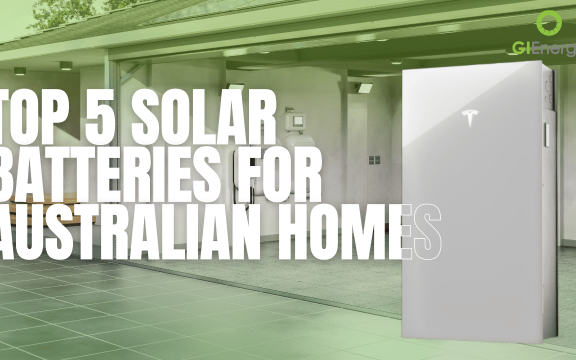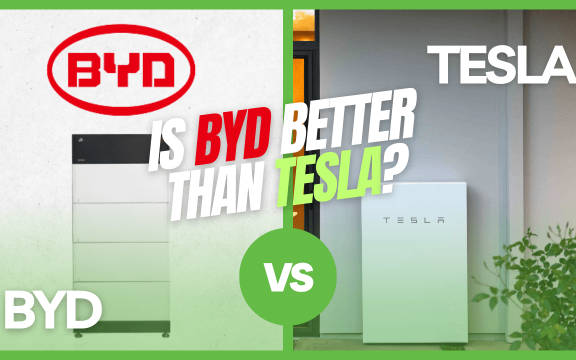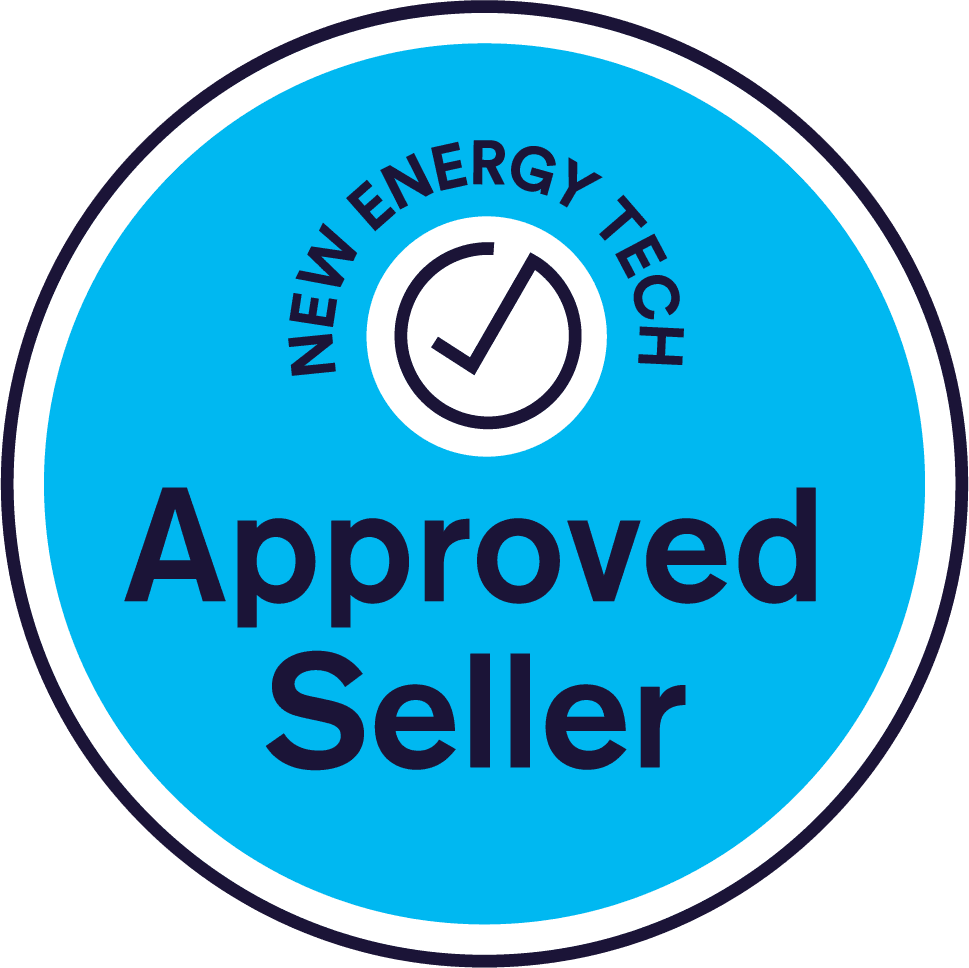Do You Need a Battery With a Solar System?
Quick Answer:
Yes, for most Australian homeowners in 2025, adding a battery with a solar system is now the smarter investment. Falling feed-in tariffs, rising electricity prices, new government rebates, and Virtual Power Plants (VPPs) have made batteries both financially viable and future-proof.
Why the Conversation Has Shifted
Go back to around 2020, GI Energy consultants would often advise against a home battery. The numbers didn’t always stack up—payback periods were often quite long, and feed-in tariffs made exporting to the grid reasonably attractive.
But today, things have changed. More than 98% of our new residential installations include a battery. That’s not hype—it’s a reflection of a new energy landscape:
-
Feed-in tariffs have collapsed to as little as 0c/kWh but more often around 4c.
-
Retail power prices are soaring, usually over 30c/kWh at peak times and up to 50c.
-
Demand charges now punish evening consumption.
-
Government subsidies cover a significant share of upfront costs.
-
Virtual Power Plants (VPPs) let households earn credits by sharing stored energy.
A solar battery changes the game. It lets you store your solar power and use it later, giving you energy independence, better ROI, and even backup during blackouts.
The Case For a Battery With Your Solar
1. Protect Against Rising Power Bills
Instead of selling excess solar for cents, you can store it and use it later—when grid power costs triple.
2. Avoid Demand Charges
Many households are now billed extra for peak demand. A battery can totally cover or significantly reduce this demand charge.
3. Unlock Subsidies and Rebates
State and federal incentives now reduce battery prices by thousands. In most cases, ROI is under 5 years and in some cases for small commercial batteries it can be as little as 2-years.
4. Access Backup Power
Storms, grid instability, and blackouts are becoming more common. A solar-plus-battery home acts as its own mini power station, keeping lights, fridges, and Wi-Fi running.
5. Join a Virtual Power Plant (VPP)
Providers like Amber, Tesla, and others reward you for allowing grid-stabilising battery discharge. Many GI Energy clients now earn monthly bill credits.
The ROI of Solar Alone vs Solar + Battery
| Factor | Solar Only | Solar + Battery |
|---|---|---|
| Upfront Cost | Lower | Higher |
| Feed-in Tariff Value | ~4c/kWh | Stored for 30–55c/kWh offset |
| Demand Charge Savings | None | $50–$300/month |
| Subsidy Impact | Small | Large |
| Payback Period | 4–8 years | 2–6 years (with subsidy) |
| Blackout Protection | No | Yes |
| Long-Term Savings | Moderate | High, with bill elimination potential |
But Are There Downsides?
It’s important to be honest. Batteries are not a one-size-fits-all solution. For households with low evening usage, the benefits may be limited. Similarly, very small solar systems may not generate enough excess to fill a battery. A proper designed battery is almost always more beneficial these days though.
That’s why GI Energy designs custom solutions, factoring in your household load profile, appliances, and lifestyle.
Residential vs Commercial Battery Value
-
Homes: Evening usage + subsidies = very strong ROI.
-
Small commercial sites: ROI as low as 2 years, if we can shift you onto a suitable VPP.
-
Large commercial: Depends on load profile, but subsidies for systems up to 50kWh make entry-level commercial batteries compelling. For bigger batteries there are opportunities to trade energy with the grid on a. large scale and generate significant revenue.
FAQs
Do I really need a battery with my solar system in 2025?
For most Australian households, yes. Between subsidies, VPP options, and high power costs, batteries now make financial and lifestyle sense.
How much does a solar battery cost in Australia?
After subsidies, many households pay between $10,000–$30,000 for a good size, good quality system, depending on capacity and brand.
What’s the payback period on a solar battery?
Typically 4–6 years, depending on energy use, tariffs, and VPP participation. Can be a low as 2-years for small businesses that can be moved to a VPP.
Can a solar battery run my whole house in a blackout?
Yes—when sized correctly. Many systems can keep essentials like refrigeration, lighting, internet, and even air-conditioning running for hours.
What’s a Virtual Power Plant (VPP) and should I join one?
A VPP links your battery to a network, allowing controlled discharge during grid stress. In return, you earn credits. See our Amber Electricity Review for more detail.
Key Takeaways
-
In 2025, buying a battery with a solar system is usually the smarter long-term choice.
-
Feed-in tariffs are too low to ignore storage.
-
Government subsidies have made ROI attractive again.
-
Backup power and energy independence add lifestyle value.
Next Step: Request a free, personalised savings report from GI Energy and see exactly how fast your battery investment can pay for itself.
About GI Energy
GI Energy is an award-winning Australian solar and battery installation company installing solar and battery since 2011. Known for ethical practices, high-performance systems, and exceptional after-install support, GI Energy is trusted by homeowners, councils, schools, and major businesses nationwide.
Popular guides to explore next:



